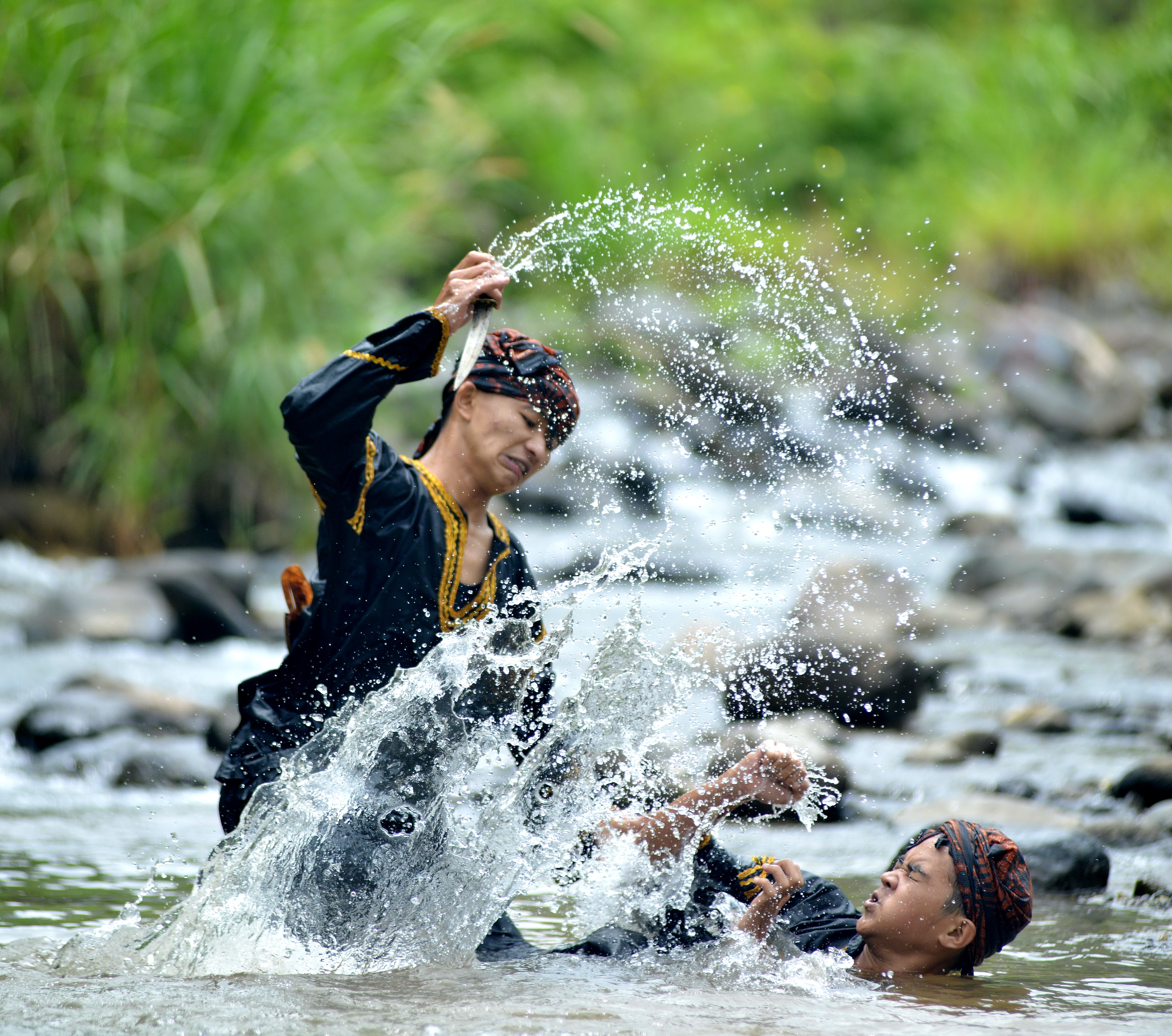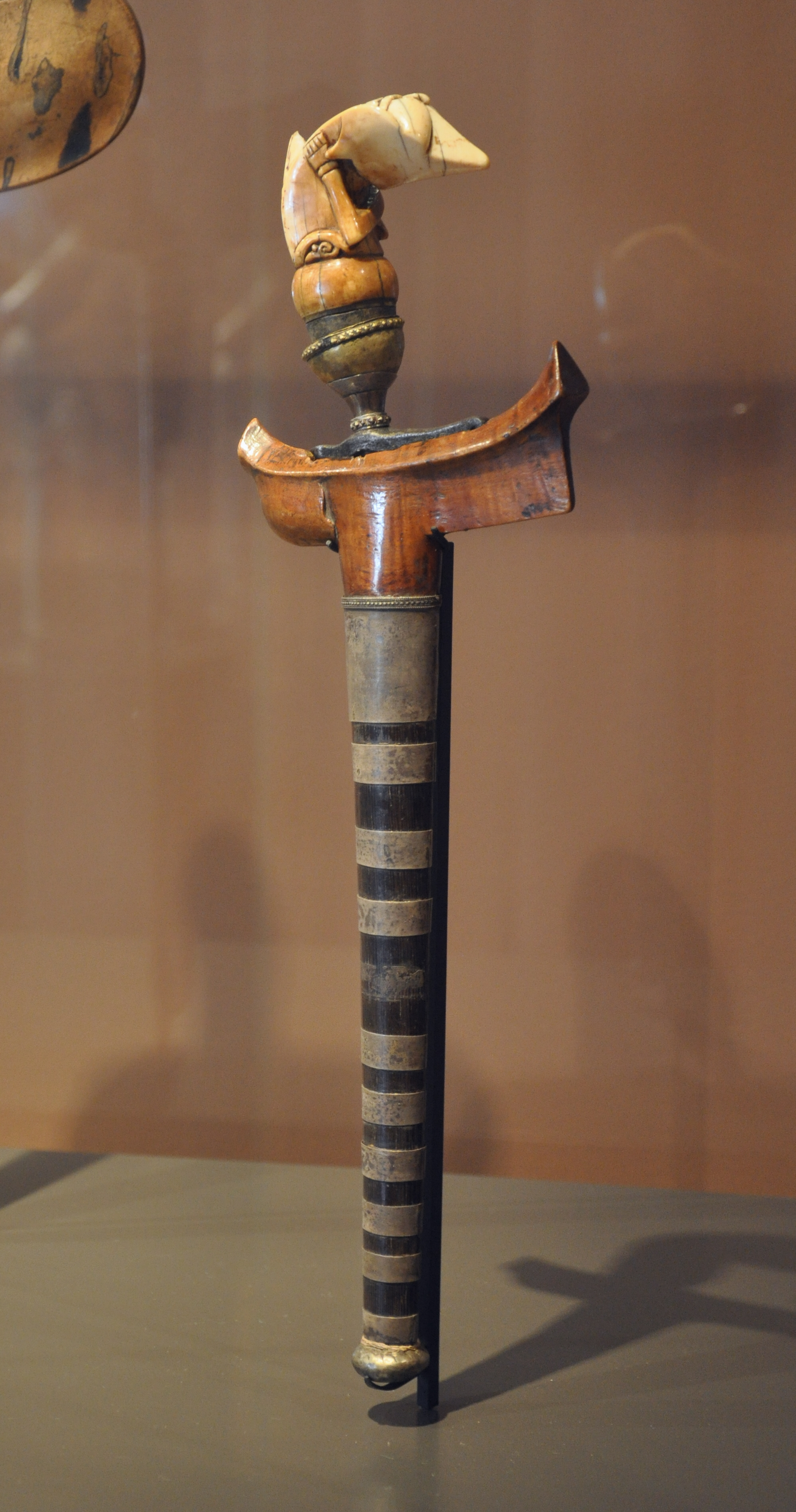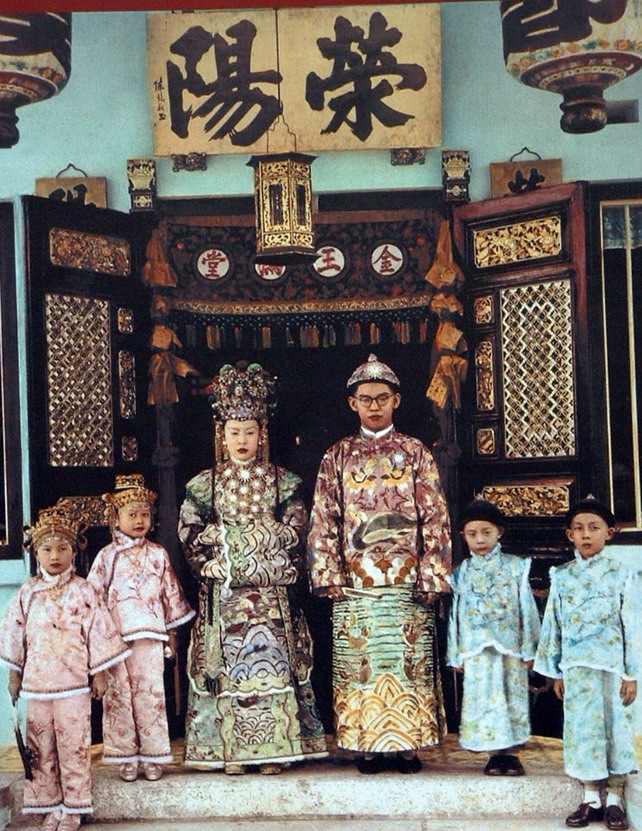|
Kuntao
Kuntao or kuntau (, ) is a Min Nan, Hokkien term for the martial arts of the Chinese community of Southeast Asia, specifically the Malay Archipelago. It is most commonly practiced in and associated with Indonesia, Malaysia, the Philippines and Singapore. Etymology There are no standard hanzi for kuntao, but the most common reading is "way of the fist", from ''kun'' 拳 meaning fist and ''tao'' 道 meaning way. Less common readings may use the character ''kun'' 棍 meaning staff, or ''tou'' 头 meaning head, so that it could be translated as "way of the staff" or roughly "knowledge of fists". In Fujian and other southern areas, this term was originally used for Chinese martial arts in general and was synonymous with ''quanfa'' (拳法, Pe̍h-ōe-jī: kûn-hoat). The word is recorded in Classical Malay and Indonesian language, Indonesian, making it the oldest known term for Chinese martial arts in those languages, before the modern adoption of the term ''kungfu''. In English, and e ... [...More Info...] [...Related Items...] OR: [Wikipedia] [Google] [Baidu] |
Silat
Silat is the collective term for a class of martial arts from the Nusantara and surrounding geocultural areas of Southeast Asia. It is traditionally practised in Brunei, Indonesia, Malaysia, Singapore, Southern Thailand, Southern Philippines and Southern Vietnam. There are hundreds of different styles (''aliran'') and schools (''perguruan'') which tend to focus either on strikes, joint manipulation, weaponry, or some combination thereof. The word ''silat'' is used by Malay speakers throughout Southeast Asia, but it is officially called ''pencak silat'' in Indonesia. The term ''pencak silat'' has been adopted globally in reference to professional competitive silat for sport, similar to the Chinese word ''wushu''. Regional dialect names include ''penca'' (West Java), ''dika'' or ''padik'' (Thailand), ''silek'' (the Minangkabau pronunciation of silat), ''main-po'' or ''maen po'' (in the lower speech of Sundanese), and ''gayong'' or ''gayung'' (used in parts of Malaysia a ... [...More Info...] [...Related Items...] OR: [Wikipedia] [Google] [Baidu] |
Weapons Of Silat
Listed here are the weapons of pencak silat. The most common are the machete, Stick-fighting, staff, kris, sickle, spear, and kerambit. Because Southeast Asian society was traditionally based around agriculture, many of these weapons were originally farming tools. Bladed weapons ;Parang (knife), Parang / Golok A chopper or cleaver originating from Sumatra and Java which, like a machete, is used to cut through overgrowth. They may be curved or straight and range in size from small handheld knives to the length of a sword. They often have curved handles that extend to protect part of the hand, but not always. Because they are so widely available, parang are one of the most popular weapons in silat. A variant of the parang is the golok, which is one of the main weapons in West Javanese styles. The golok blade is heaviest in the centre and ranges in length from . ;Sabit / Celurit A sickle originally employed when harvesting crops. It may be paired and was historically one of the most ... [...More Info...] [...Related Items...] OR: [Wikipedia] [Google] [Baidu] |
Hanzi
Chinese characters are logographs used to write the Chinese languages and others from regions historically influenced by Chinese culture. Of the four independently invented writing systems accepted by scholars, they represent the only one that has remained in continuous use. Over a documented history spanning more than three millennia, the function, style, and means of writing characters have changed greatly. Unlike letters in alphabets that reflect the sounds of speech, Chinese characters generally represent morphemes, the units of meaning in a language. Writing all of the frequently used vocabulary in a language requires roughly 2000–3000 characters; , nearly have been identified and included in ''The Unicode Standard''. Characters are created according to several principles, where aspects of shape and pronunciation may be used to indicate the character's meaning. The first attested characters are oracle bone inscriptions made during the 13th century BCE in what ... [...More Info...] [...Related Items...] OR: [Wikipedia] [Google] [Baidu] |
Guangdong
) means "wide" or "vast", and has been associated with the region since the creation of Guang Prefecture in AD 226. The name "''Guang''" ultimately came from Guangxin ( zh, labels=no, first=t, t= , s=广信), an outpost established in Han dynasty near modern Wuzhou, whose name is a reference to an order by Emperor Wu of Han to "widely bestow favors and sow trust". Together, Guangdong and Guangxi are called ''Liangguang, Loeng gwong'' ( zh, labels=no, first=t, t=兩廣, s=两广 , p=liǎng guǎng) During the Song dynasty, the Two Guangs were formally separated as ''Guǎngnán Dōnglù'' ( zh, first=t, t=廣南東路, s=广南东路, l=East Circuit (administrative division), Circuit in Southern Guang , labels=no) and ''Guǎngnán Xīlù'' ( zh, first=t, t=廣南西路, s=广南西路, l=West Circuit (administrative division), Circuit in Southern Guang , labels=no), which became abbreviated as ''Guǎngdōng Lù'' ( zh, first=t, t=廣東路, s=广东路 , labels=no) and ''Guǎngxī Lù ... [...More Info...] [...Related Items...] OR: [Wikipedia] [Google] [Baidu] |
Shandong
Shandong is a coastal Provinces of China, province in East China. Shandong has played a major role in Chinese history since the beginning of Chinese civilization along the lower reaches of the Yellow River. It has served as a pivotal cultural and religious center for Taoism, Chinese Buddhism and Confucianism. Shandong's Mount Tai is the most revered mountain of Taoism and a site with one of the longest histories of continuous religious worship in the world. The Buddhist temples in the mountains south of the provincial capital of Jinan were once among the foremost Buddhist sites in China. The city of Qufu was the birthplace of Confucius, and later became the center of Confucianism. Shandong's location at the intersection of ancient and modern north–south and east–west trading routes has helped establish it as an economic center. After a period of political instability and economic hardship beginning in the late 19th century, Shandong has experienced rapid growth in recent de ... [...More Info...] [...Related Items...] OR: [Wikipedia] [Google] [Baidu] |
Zheng He
Zheng He (also romanized Cheng Ho; 1371–1433/1435) was a Chinese eunuch, admiral and diplomat from the early Ming dynasty, who is often regarded as the greatest admiral in History of China, Chinese history. Born into a Muslims, Muslim family as Ma He, he later adopted the surname Zheng conferred onto him by the Yongle Emperor (). Between 1405 and 1433, Zheng commanded seven Ming treasure voyages, treasure voyages across Asia under the commission of the Yongle Emperor and the succeeding Xuande Emperor (). According to legend, Zheng's largest ships were almost twice as long as any wooden ship ever recorded, and carried hundreds of sailors on four decks. A favorite of the Yongle Emperor, whom Zheng assisted in the Jingnan campaign that overthrew the previous Jianwen Emperor in 1402, Zheng He rose to the top of the Ming Government of the Ming Empire, imperial hierarchy and served as commander of the southern capital Nanjing. Early life and family Zheng was born Ma He to a Musl ... [...More Info...] [...Related Items...] OR: [Wikipedia] [Google] [Baidu] |
Peranakan
The Peranakan Chinese () are an ethnic group defined by their genealogical descent from the first waves of Southern Chinese settlers to maritime Southeast Asia, known as Nanyang (region), Nanyang (), namely the British Empire, British, Portuguese Empire, Portuguese, and Dutch Empire, Dutch colonial ports in the Malay Peninsula and the List of islands of Indonesia, Indonesian Archipelago, as well as Singapore Island, Singapore. The Peranakan Chinese are often simply referred to as the Peranakans. Peranakan culture, especially in the dominant Peranakan centres of Malacca, Singapore, Penang, Phuket, and Tangerang, is characterized by its unique hybridization of ancient Chinese culture with the local cultures of the Nusantara (archipelago), Nusantara region, the result of a centuries-long history of transculturation and interracial marriage. Immigrants from the southern provinces of China arrived in significant numbers in the region between the 14th and 17th centuries, taking abode ... [...More Info...] [...Related Items...] OR: [Wikipedia] [Google] [Baidu] |
Dayak People
The Dayak (; older spelling: Dajak) or Dyak or Dayuh are the native groups of Borneo. It is a loose term for over 200 riverine and hill-dwelling ethnic groups, located principally in the central and southern interior of Borneo, each with its own dialect, customs, laws, territory, and culture, although common distinguishing traits are readily identifiable. The Dayak were animist (Kaharingan and Folk Hindus) in belief; however, since the 19th century there has been mass conversion to Christianity and to Islam. Etymology It is commonly assumed that the name originates from the Bruneian and Melanau word for "interior people", without any reference to an exact ethnic group. Particularly, it derives from a related Kenyah word for "upstream" (compare with ethnonym Lun ''Dayeh''). The term was adopted by Dutch and German authors as an umbrella term for any non-Muslim natives of Borneo. Thus, historically, the difference between Dayak and non-Dayak natives could be understood as a ... [...More Info...] [...Related Items...] OR: [Wikipedia] [Google] [Baidu] |
Batak
Batak is a collective term used to identify a number of closely related Austronesian peoples, Austronesian ethnic groups predominantly found in North Sumatra, Indonesia, who speak Batak languages. The term is used to include the Karo people (Indonesia), Karo, Pakpak people, Pakpak, Simalungun people, Simalungun, Batak Toba people, Toba, Angkola people, Angkola, Mandailing people, Mandailing and related ethnic groups with distinct languages and traditional customs (''adat''). History Prehistory While the archaeology of southern Sumatra testifies to the existence of Neolithic settlers, it seems that the northern part of Sumatra was settled by agriculturalists at a considerably later stage. Although the Batak are often considered to be isolated peoples due to their location inland, away from the influence of seafaring European colonials, there is evidence that they have been involved in trade with neighbouring kingdoms for a millennium or more. Influenced by Tamil Peoples Th ... [...More Info...] [...Related Items...] OR: [Wikipedia] [Google] [Baidu] |
Toraja
The Torajan are an ethnic group indigenous people, indigenous to a mountainous region of South Sulawesi, Indonesia. Their population is approximately 1,100,000, of whom 450,000 live in the List of regencies and cities of Indonesia, regency of Tana Toraja ("Land of Toraja"). Most of the population is Christianity, Christian, and others are Islam, Muslim or have local animism, animist beliefs known as ''aluk'' ("the way"). The Indonesian government has recognised this animistic belief as ''Aluk To Dolo'' ("Way of the Ancestors") as well as ''Hindu Alukta'', namely, a form of Hinduism in Indonesia. The word ''Toraja'' comes from the Buginese language term ''to riaja'', meaning "people of the uplands", this cognates with the Toraja language ''to'' ''raya''/''to'' ''raja''/''to raa'' which also means "inland/upland people" or "northern people". The Dutch East Indies, Dutch colonial government named the people ''Toraja'' in 1909. Torajans are renowned for their elaborate Funeral, fune ... [...More Info...] [...Related Items...] OR: [Wikipedia] [Google] [Baidu] |
Donn F
In Irish mythology, Donn ("the dark one", from ) is an ancestor of the Gaels and is believed to have been a god of the dead. Donn is said to dwell in Tech Duinn (the "house of Donn" or "house of the dark one"), where the souls of the dead gather. He may have originally been an aspect of the Dagda. Folklore about Donn survived into the modern era in parts of Ireland, in which he is said to be a phantom horseman riding a white horse. Early literary sources A 9th-century poem says that Donn's dying wish was that all his descendants would gather at Donn's house or ''Tech Duinn'' (modern Irish ''Teach Duinn'') after death: "To me, to my house, you shall all come after your deaths". The 10th-century tale ''Airne Fíngein'' ("Fíngen's Vigil") says that Tech Duinn is where the souls of the dead gather. In their translation of '' Acallam na Senórach'', Ann Dooley and Harry Roe commented that "to go to the House of Donn in Irish tradition means to die". This suggests that the pagan G ... [...More Info...] [...Related Items...] OR: [Wikipedia] [Google] [Baidu] |





